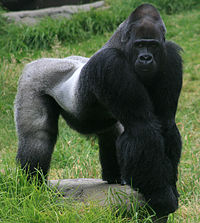
Photo from wikipedia
Information on reproductive biology and pollination ecology studies of threatened plants are essential to develop strategies for their sustainable utilization and effective conservation. As such, these studies were conducted on… Click to show full abstract
Information on reproductive biology and pollination ecology studies of threatened plants are essential to develop strategies for their sustainable utilization and effective conservation. As such, these studies were conducted on Rheum webbianum, a high-value “vulnerable” medicinal herb of the north-western Himalaya. This species presents a unique mode of reproductive behavior through the involvement of different floral events, including the movement of reproductive organs. The plants survive extremely cold conditions through underground perennating rhizomes that sprout into juvenile shoots with the onset of the favorable climatic conditions. The peduncle arises from the axils of the radical leaves, bearing a globular collection of densely arranged hermaphrodite flowers with temporally separated male and female phases; the male phase precedes the female phase (protandry). Anther dehiscence and stigma receptivity is post-anthesis. Anthers dehisce longitudinally along margins, liberating a large mass of spherical and tricolpate pollen with spinulose exine. Pollen viability decreased to < 10% on day 9. Pistil is tristylous, with each style terminating into a fan-shaped stigma lobe. The pollen receptive surface of each stigmatic lobe remains incurved at an angle of 360° and shows upward movement after anthesis, forming a funnel-like structure at an angle of 180° with respect to the ovary. Pollination syndrome is ambophilous. Spontaneous autogamy or geitonogamy to a certain extent is achieved in this species due to the arrangement of flowers in the inflorescence and overlapping of male and female reproductive phases among them. Incurved stigmatic lobes and outward movement of stamens too facilitate outcrossing. Pollen/ovule ratio estimates, results of pollination experiments on breeding behavior, outcrossing, and self-compatibility indices demonstrated that plants are self-compatible and cross-fertile.
Journal Title: Frontiers in Plant Science
Year Published: 2022
Link to full text (if available)
Share on Social Media: Sign Up to like & get
recommendations!